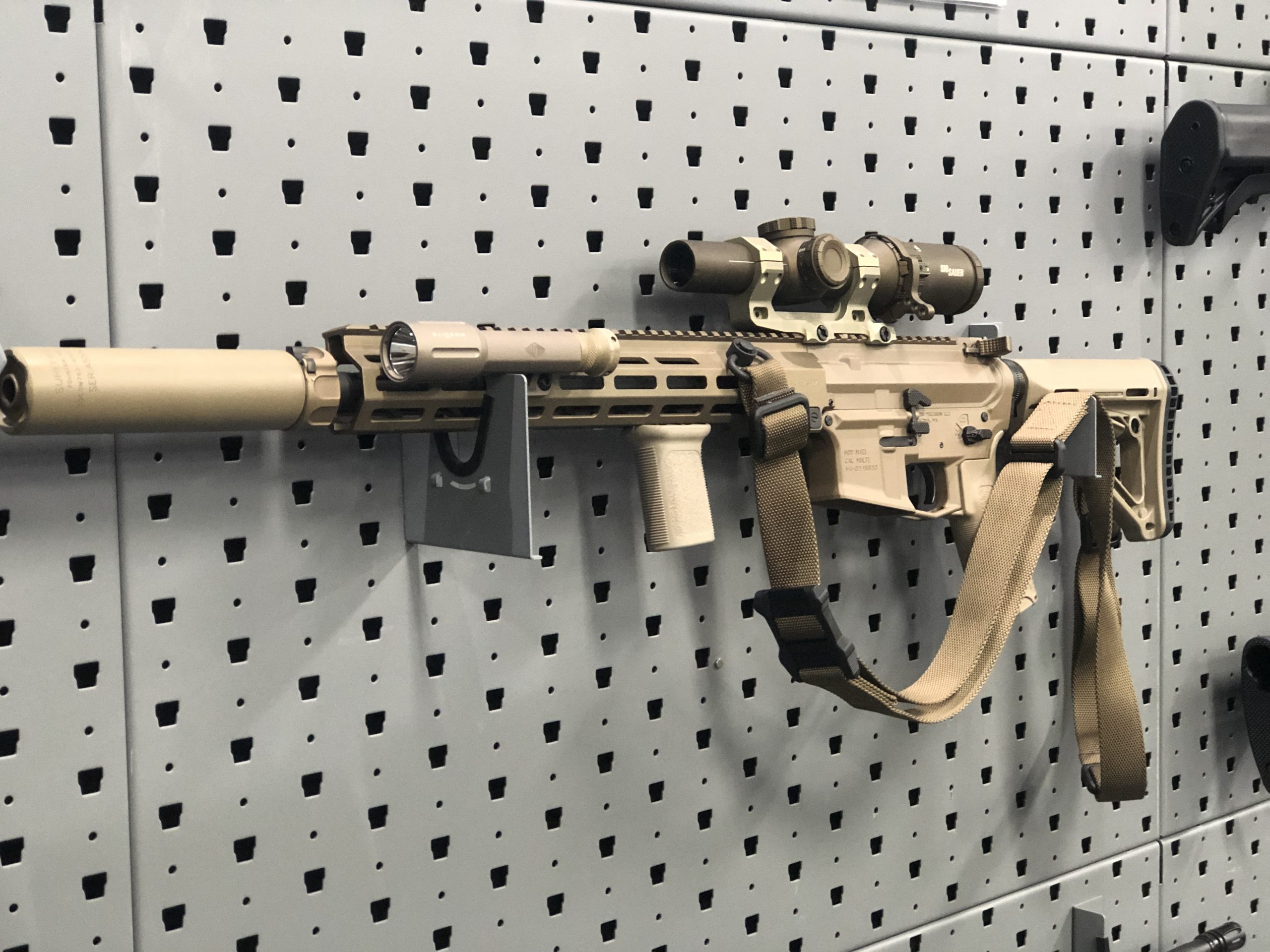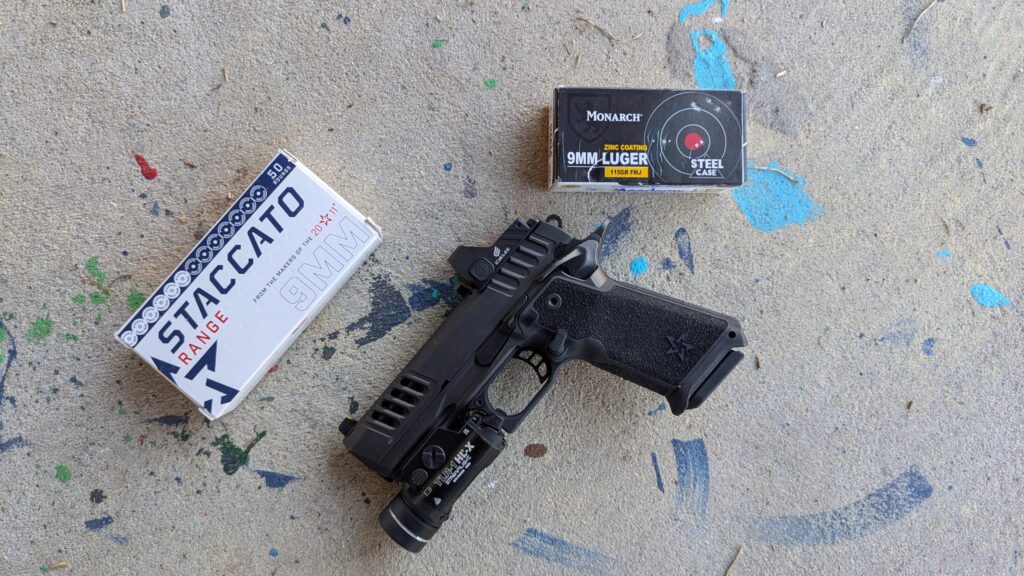Many Firearm Buyers and Sellers do not Comply with Assault Weapons Bans
New UC San Diego research suggests that gun laws would gain more compliance if they were enforced
There it is, readers, the dumbest smart thing you will likely read today. It is time for yet another fisking of an article.
UC San Diego is apparently publishing a paper this month that says more people comply with laws that are enforced. Duh. They also state that people don’t comply with rules that aren’t enforced. Again, kinda obvious. We can’t get people to comply with speed limits and prohibition has never succeeded in history, but UCSD wants to tell us what they think would happen if another Federal Assault Weapons Ban were to be passed into effect.
Newswise — With the number of mass killings by firearms rapidly increasing from 270 in 2014 to 693 in 2021, President Biden recently called for the reinstatement of the federal assault weapons ban as a way to curtail gun violence…
Advertisement — Continue Reading Below
That’s easy to say when you softly continue to loosen the definition of mass killing to include pretty much anything beyond double homicide. This from the far more stringent definitions of MAPS attacks and other events we consider mass shootings. Every driveby, gang shootout, domestic double homicide, and so forth are now all mass shootings.
And what causes mass shootings? It must be ‘Assault Weapons’ because that is what is being banned in response.
…But how effective are weapons bans and will the market comply with them? For decades, the issue has been understudied due to unreliable data, but new research from the University of California San Diego’s Rady School of Management provides insights into what might happen if new federal assault weapon restrictions were put into place.
Advertisement — Continue Reading Below
I think we have a several perfect examples of compliance right now. How many mass shootings have happened in California with prohibited weapons? How many mass killings have happened with non-prohibited weapon types even if prohibited ones were available? Are there any significant disparity in the lethality of these events when the determined shooter still had targets?
I’ll save you the trouble. There isn’t. There is no causative data that suggests the lethality of a mass shooting event is determined by the weapon being semi-auto and magazine fed. That the ability to ‘reload’ and ‘fire rapidly’ increased the body count where something comparatively slow firing, like a pump shotgun (been used in mass killing), or a bolt action (also been used in mass killing), or even a .22 pistol with a limited 10 round magazine (yep, you guessed it, been used in mass killing) would not have been.
Until Las Vegas and Orlando, a .22 pistol and a 9mm pistol with a single perpetrator was the worst shooting spree in American history. Compare that to the North Hollywood shootout where there were only two deaths, the bank robbers. Those two men had fully automatic weapons, and drastically outgunned the officers responding at the time, and fired over 1,100 rounds.
Advertisement — Continue Reading Below
“But Keith, they were trying to rob a bank…”
So you’re telling me that the motivation, opportunity, and availability or lack of opposing force matter more than the weapons? Noted.
A paper to be published in the March issue of the Journal of Empirical Legal Studies assessed the impacts of the 2016 Massachusetts Assault Weapons Ban Enforcement Notice. Massachusetts Attorney General Maura Healey issued the Enforcement Notice to clarify that new sales of AR-style rifles—millions of which had been sold in the state—would be considered illegal under the state’s Assault Weapons Ban.
Advertisement — Continue Reading Below
It has worked out so well in California.
Unique to the UC San Diego study is its analysis of data on firearm sales and licenses, which are difficult to obtain in jurisdictions across the country. The paper finds that within five days of the Massachusetts Enforcement Notice’s announcement, assault rifle sales increased by 560 percent (up by 1,349). However, they were 64 to 66 percent lower in 2017 than in comparable earlier periods, indicating that the Enforcement Notice reduced assault weapon sales in the long run, but also that many banned weapons continued to be sold. In Massachusetts, similar to laws in Washington and Colorado, compliance from gun dealers and manufacturers is voluntary with no recourse from law enforcement officials with respect to prohibited weapons.
Voluntary? I am pretty certain that a dealer gets in hot water for selling prohibited firearms. I can’t just start selling post-86 automatics and tell the ATF and MSP that my compliance was voluntary. However, if firearms are ‘Grandfathered’ (and can be bought and sold as such) then they aren’t non-compliant with the law. Also firearms that are in violation ‘in spirit’ don’t count, that isn’t how law works.
Advertisement — Continue Reading Below
That’s as dishonest as saying all these darn corporations are taking the tax incentives they were offered so they aren’t paying their fair share. You literally made the rule, but you are mad they are following it because you wanted the rule to be different.
Sorry, my dude.
“Our research suggests new firearm restrictions require enforcement to gain full compliance,” said Kenneth C. Wilbur, professor of marketing and analytics at the Rady School and co-author of the study. “If the market complied fully with the Enforcement Notice, then assault rifle sales should have been zero in 2017. The data clearly show that not all firearm sellers and buyers complied with firearm restrictions. In fact, they directly reported their own noncompliance to the state government.”
Advertisement — Continue Reading Below
If everyone followed the speed limit than nobody would speed either. If nobody drink and then drove then there would be no drinking and driving. Brilliant, Professor Wilbur, absolutely groundbreaking stuff right there. Also, full compliance is delightful fantasy. Good luck with that.
Wilbur and co-author Meenakshi Balakrishna, a PhD candidate in quantitative marketing at Rady, point out that the Enforcement Notice was intended to close an important loophole in the initial Massachusetts assault weapons ban first instated in 1998. It outlawed copies or duplicates of banned assault rifles that facilitate rapid firing and rapid reloading, such as the Colt AR-15 and the Kalishnikov AK-47.
Good luck, with that definition you just have to invent a new rifle (which happens yearly) and it just must be declared a copy or duplicate. Good luck, especially if it isn’t a copy or duplicate. Just good friggin’ luck.
Advertisement — Continue Reading Below
“After the 1994 federal assault weapon ban was enacted, gun manufacturers quickly introduced minor variations on the specific firearm products named in the ban, thereby apparently skirting the ‘copies and duplicates’ restriction,” Wilbur and Balakrishna write. “AR-style rifles today are extremely popular—an estimated 1 to 2 million AR-style rifles were manufactured in 2016 with up to 15 million in circulation.”
That has now surpassed 20 million. So the ban didn’t work, or stick, when the number was estimated at 400,000 in circulation but we’re speculating about what full compliance would look like with 20,000,000+ units in circulation and “F*ck the Feds!” sentiment at a pretty spicy level?
Okay…
Advertisement — Continue Reading Below
Another important takeaway from the Massachusetts law, which was announced by the state’s Attorney General seemingly without warning, nor debate, was how it immediately prompted a spike in sales of the very guns it outlawed. “The Massachusetts Enforcement Notice was seen as a surprise,” Wilbur said. “Our research suggests that if a politician or a regulatory body wants to restrict weapons, they should design both their policy changes and their communications about their policy changes very carefully.”
Another brilliant piece of wisdom that gun controllers can’t follow. Why? Because the more you try and ban only the ‘bad’ guns the more you cannot. ‘Very Carefully’ is never going to get the bad firearms that allegedly are the problem in mass shootings when rifles account for a super minority of firearm homicide deaths every year. That means most mass killings are still perpetrated by the small, cheap, and convenient handgun.
He added, “We see a direct correspondence in increased gun sales following mass shootings. Most of that is probably driven by purchaser concern about new weapon restrictions. Manufacturers both benefit from those concerns and actively promote them. Policymakers also need to be proactive in communicating their message on the topic clearly to constituents.”
Again, they can’t. There is no good way to communicate, ” Hey, we are taking away your rights that we don’t agree with for a really stupid and indefensible reason.” You can’t communicate, “We’re totally just banning the bad guns, guys.” when there is no agreement, even on the pro-ban side, on what those are and the concept makes no sense to the learned in firearms.
Clear communication isn’t the problem, it is that this is clearly a terrible and ineffectual idea. We understand what gun banners want to do, to well, that’s why the obfuscatory ignorance doesn’t work nearly as well as it did in the 90’s.
This research also has implications for firearm data collection and provision. The data for the study were obtained through the authors filing a Freedom of Information Act request with the Massachusetts Department of Criminal Justice Information Services. However, they note this information could be made public while preserving privacy information.
Well that’s good, I suppose. Wouldn’t want another repeat of the New York incident where a newspaper just published gun owners’ addresses across a whole county for “public safety” because damn the consequences. We wouldn’t want gun owners to believe they’re any more noble than child predators and sex offenders now would we? We should treat them the same. Put them on lists.
Again, communication isn’t the issue here. This isn’t a failure to communicate, it is a fundamental disagreement on policy where to policy suggesting side cannot fathom the concept that they are wrong.
The study was made possible because the Massachusetts Department of Criminal Justice complied with the public records requests. Similar requests were filed in California. However, the state’s information services department did not comply with the academic researchers’ request for more detailed access to the state’s aggregated firearm registration data.
“More and better scientific analyses will become possible if more jurisdictions collect and disseminate privacy-compliant firearm sales data,” they said. “This can be done at the state, county, city or even retailer level. Just as data on the spread of COVID has been critical to shaping policies during the pandemic, we need more and better firearm research if we hope to have evidence-based firearm policy.”
That’s the problem. Evidenced based firearms policy is pipedream. Everyone says they want it and then discards any evidence against their pet solution to the problem. Pro-firearm groups and individuals have no basis to trust the results put forward from these researchers when they over and over again prove their bias. They over and over again prove they are unwilling to acknowledge the complexity of violence and will cherry pick their survey and data collection to correlate to the result they want.
It’s as asinine as, ‘study shows that people wounded by gunfire have a negative opinion of the experience’ or ‘study shows that people hit by gunfire are injured and sometimes killed’. We’re back to, “Duh!” in the execution of information gathering. We like to pretend there are no stupid questions but we all know that’s a platitude to try and get people over their fear of sounding stupid in their pursuit of information and not a statement of fact.
Because there are stupid, stupid, stupid questions asked every day, in every space, about every topic, and sometimes equally stupid answers are delivered with the confidence that can only be carried by total blissful ignorance of the facts involved. Violence is complicated because people are complicated.
It disheartens me every time we go down this path of inquiry because as often as we call this a ‘medical problem’ and tag it with terms like epidemic. We sure as hell don’t treat it like it. We don’t treat traffic injuries like this.
Imagine if a doctor came onto a podium speaking of the horrific disfiguring injuries caused by roadways, one in particular being road rash from bike riders hitting the pavement. Their solution is remove gravel roads since the roadway was the device of injury. Or better yet the solution was pave all the gravel roads, since paved roads are ‘safer’ and less likely to imbed gravel into the skin. Now if you currently live on a gravel road, it is grandfathered in but we place the burden on removing the gravel roads and driveways solely the purview of the people living on them as they change property ownership. All while those owners and prospective owners point out all the other methods of traffic injury and the reasons their roads aren’t any seriously greater risk than other roads, but the doctor is telling them it is for everyone’s safety and we would finally be tackling the problem of traffic related injuries seriously.
Would that seem a little intellectually dishonest? Short sighted? Ignoring inconvenient data because we must ‘do something’ about this?
That is the fight firearm advocates face every day. A nonsensical wish campaign where everything would be a-ok if everyone would just behave exactly as they should and never do anything risky ever. Utopia fallacy at its finest.
We are tired of seeing it tied into academia and places where empirical information should matter. We are tired of being taken a piss upon, to borrow the english slang, and then expected to call it rain.















